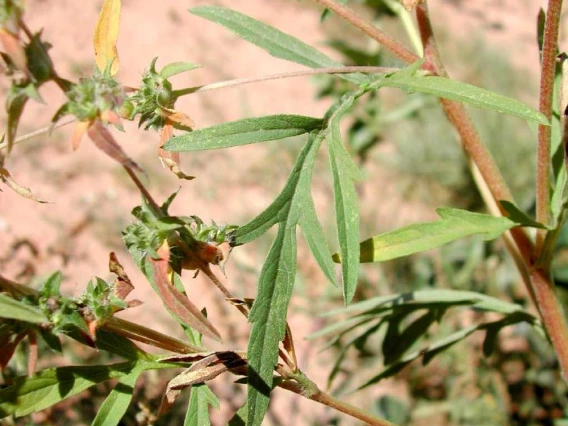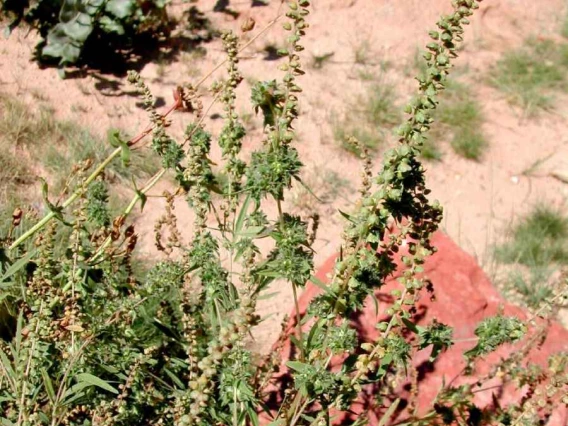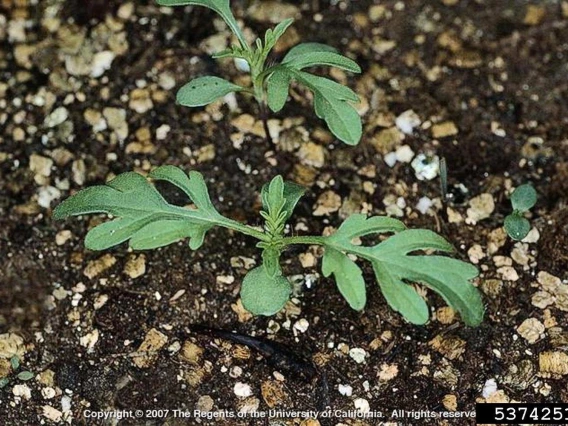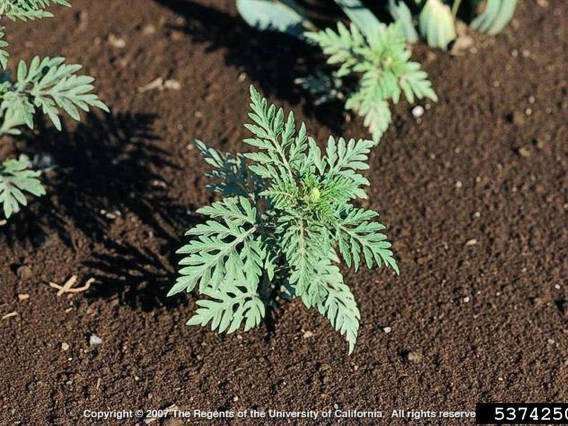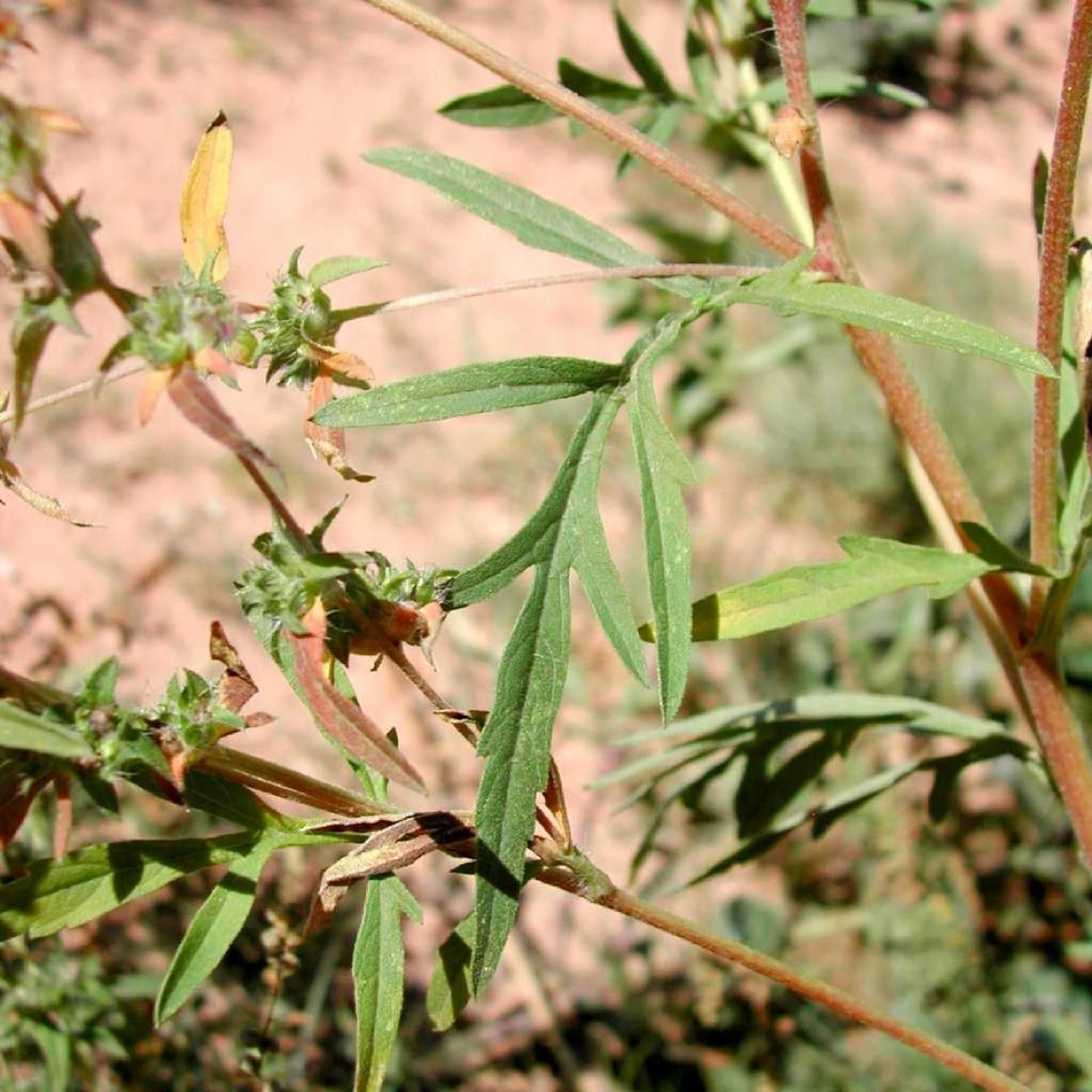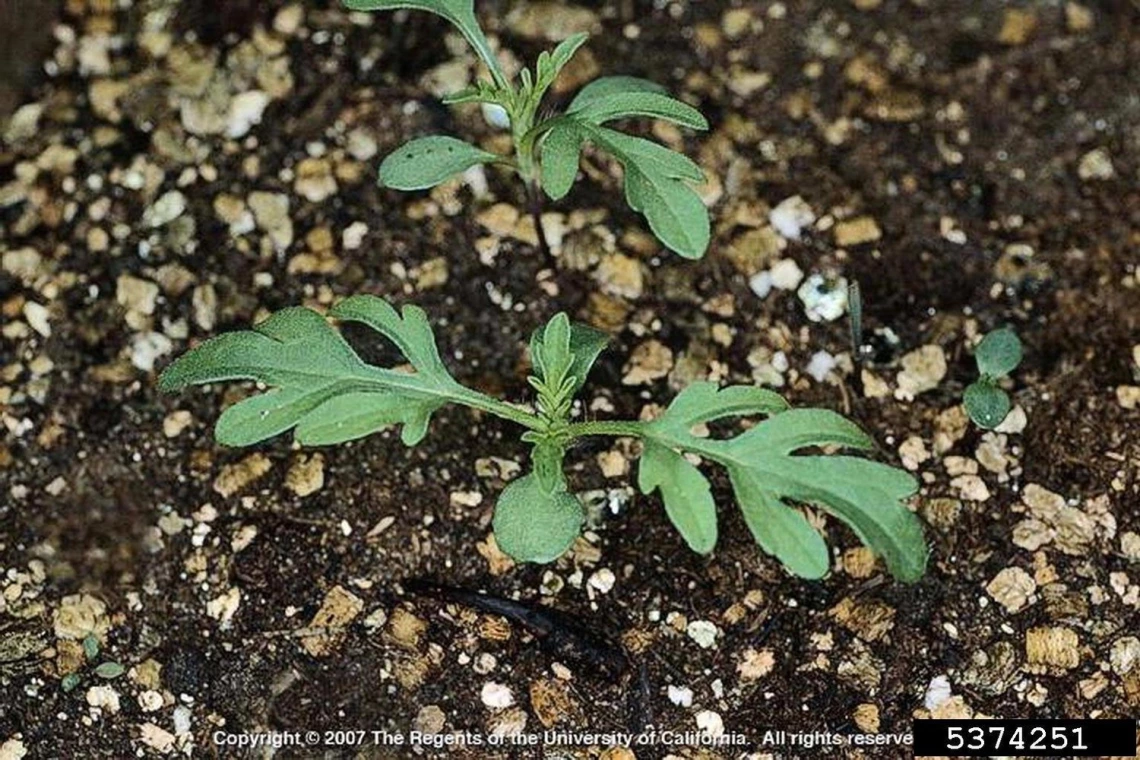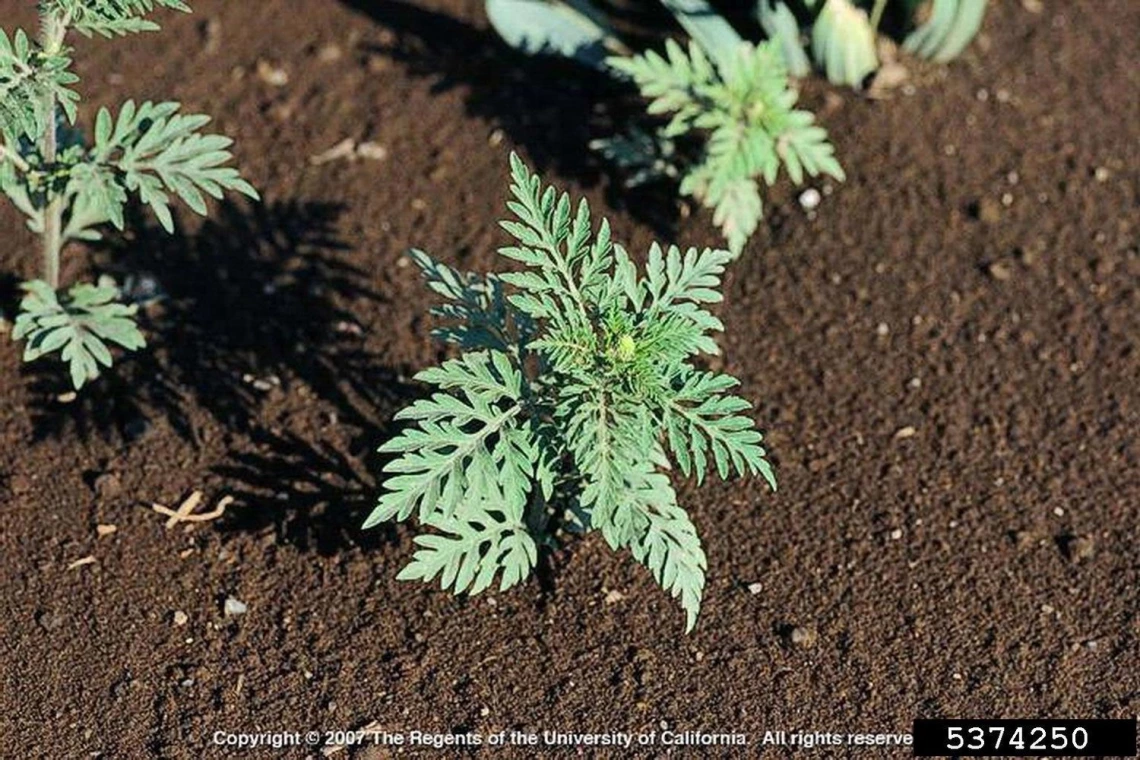Image
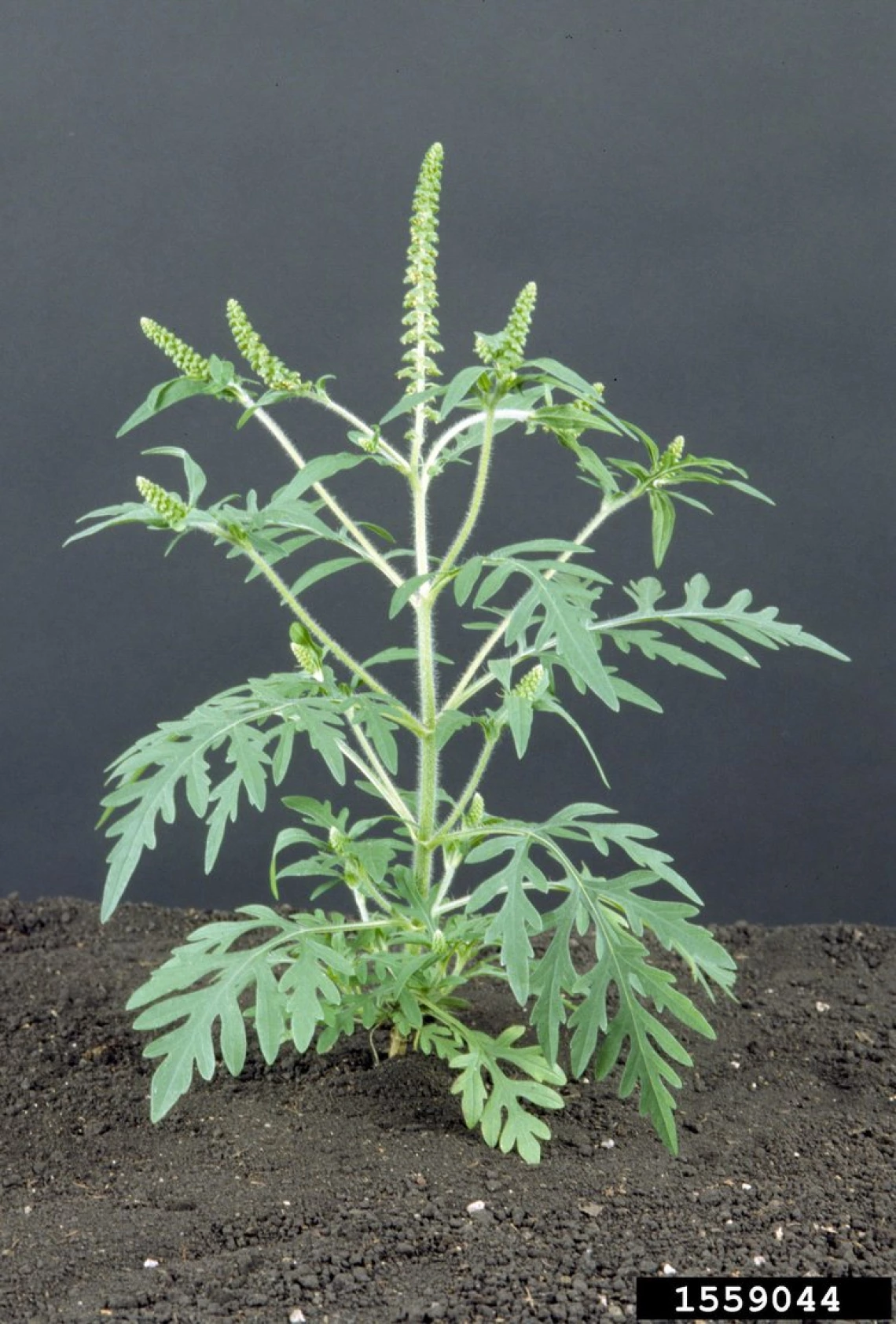
Ragweed
Ohio State Weed Lab Archive, Bugwood.org
Common Name(s)
Ragweed
Common ragweed
Scientific Name
Ambrosia artemisiifolia
Family
Sunflower or Aster family (Asteraceae)
Reasons for concern
This plant has allelopathic (toxic) properties that inhibit the growth and development of neighboring plants, leading to a monoculture. It produces a huge amount of pollen in the fall, afflicting millions of people who have allergies.
Special note
Native plants have evolved together over centuries with pollinators, birds, wildlife and other native plants. We may not understand the role this native plant plays in our environment, so we may not want to completely eliminate it.
Classification
Native
Botanical description
Erect, branching, broadleaf herbaceous plant.
Leaves
Finely divided. Up to 6 inches long and 4 inches across. Young leaves blue-green and hairy. Mature leaves hairless.
Stem(s)
Erect. Many branched. Greatly varied in size, up to 3 to 4 feet tall. Green to light pinkish red. Sometimes blue-green. Upper stems end in one or more spikes of flowers.
Flowers
Numerous, small, inconspicuous flowers, initially green. Later turn yellowish-green or brown as they go to seed. Male flowers produce fine, wind-carried pollen, spread in late summer or early fall. There are male and female flowers in clusters on ends of branches, with male flowers found above female flowers. Gravity aids fertilization. Flowering occurs in August through September.
Seeds
Numerous. Seeds mature by October.
Roots
Extensive root system. Fibrous.
Native to
United States, except Alaska and Hawaii, Canada and northern Mexico.
Where it grows
In full sun with average to dry conditions from 5,200 to 8,000 elevation. Along ditches, in waste areas, and other disturbed areas, and areas along roadsides and railroads. In gardens and lawns. In many soil types, including high amounts of clay, gravel or sand, and in sterile soil.
Lifecycle
Annual
Reproduction
By seed
Weedy Characteristics
Ragweed produces numerous seeds, which remain viable for 5 years or much more. These seeds are easily dispersed by wind, water, and birds, burrowing animals, and humans. It is resistant to drought and grows in many soil types and under adverse conditions. It has allelopathic (poisonous) properties that inhibit growth and development of nearby plants. Repeatedly monitor previous infestations for new growth.
Look-alike Plants
There are several different species of native ragweed (Ambrosia spp.) in northern Arizona which look similar to each other. They all share the same weedy characteristics, reasons for concern, and control strategies.
Control Strategies
Hand-pull before plants flower or go to seed, release pollen, and spread seeds in late summer. It is easy to pull. Bag any buds, flowers or seeds. Heavy mulches can greatly reduce growth. Mowing is ineffective. Repeatedly monitor previous infestations for new growth. Plant desirable native species to outcompete invasives.
References
- Ambrosia artemisiifolia Bugwood wiki, Center for Invasive Species and Ecosystem Health, U Georgia
- Common ragweed Missouri State University IPM Field Weeds

